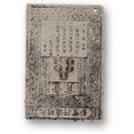Museo
Museum
Considered to rank among the world’s leading museums of its kind, Museo Casa de la Moneda boasts rich and varied collections and spacious exhibition areas, combined with the technical support offered by our staff to researchers and educators alike. In a word, it is a unique place to learn about the world of money.

The origins of the Casa de la Moneda Museum date back to the eighteenth century and are closely linked to the figure of Tomás Francisco Prieto, Master Engraver to the Mints of King Charles III, and the Director of Intaglio Engraving at the Royal Academy of Fine Arts of San Fernando. Prieto was also the founder, in 1771, of a School of Engraving where training was given to the artists who would later ply their skill in the Mints of Spain and the Indies.
The collection of drawings, engravings, antique books, coins and medals assembled by Prieto for the instruction of his pupils, and bought by King Charles III, became after his death in 1783 the initial nucleus of the Museum. This has gradually been expanded with successive acquisitions and donations, in addition to sample copies of the different products that are made in the FNMT-RCM.
The original collection of the Casa de la Moneda Museum was shown to the public for the first time during the reign of Isabella II, in 1867, in the former Spanish Mint building located in the Plaza de Colón. There it remained until 1964, when it was brought to its current accommodation.
NUMISMATICS
We can revisit the history of the coin from its very beginnings (the first coins made from electrum in the 7th century B.C.), then the Greek and Roman series, including significant examples of coins made in Syracuse, Athens, Aegina, etc... right through to the first coins issued by the Roman Republic. The Hispanic coin collection is a highlight, with pieces mainly from the ancient Gómez Moreno collection.
From the Medieval period, the Museum offers a significant sample of Suebi and Visigoth gold pieces and a large selection of Islamic pieces issued on the Peninsula, as well as coins from the Catholic Kings during the Reconquest. The modern and contemporary coin series range from the Catholic Monarchs to the current Euro coins. The excelentes and ducados from the reign of the Catholic Monarchs are particularly notable for their beauty and historical significance. Further key pieces include reales de a ocho (“pieces of eight”), the universally accepted currency until the 19th century, and ounces of gold. There are also coins issued by the Provisional Government, which established the peseta as the Spanish unit of currency.


PHILATELY AND PRE-PHILATELY
The Museum houses all issues of Spanish postage stamps printed since their creation in 1850, as well as the items used to make them: original drawings, plates, millstones, etc. All these are the work of the great engravers Bartolomé Maura, Eugenio Juliá, Enrique Vaquer, J.L. Sánchez Toda, Camilo Delhom, Antonio Manso. The Museum also owns around 2,000 letters bearing pre-philatelic marks from the 18th and 19th centuries, prior to the appearance and use of postage stamps.
The Museum has more than 4,000 items of stamped paper, official state stamps, punches, matrices, full documents, loose sheets, headers, etc. These items help us to follow the typological evolution of revenue stamps.


LOTTERY AND BETS
The Fábrica Nacional de Moneda y Timbre has printed lottery tickets in our country since 1940. The Casa de la Moneda Museum houses full sheets and fractions of all the National Lottery draws since that year. It also keeps sketches, preliminary drawings and matrices used to make them. The Museum collections include some tickets from draws in the 19th century and early 20th century.



BANKNOTES AND OTHER PAYMENT METHODS
The Casa de la Moneda Museum has a valuable sample of paper money, which tells the political, economic and cultural story of each issuing country.
From an old 14th century Chinese note made from mulberry wood, through to those made with the most sophisticated technology available. The collection offers interesting examples, such as 19th century Spanish banknotes, notes issued by the Continental Congress of the United States backed by the Spanish peso or duro, colonial banknotes, German Notgeld (emergency money from between the two world wars), or banknotes from the Russian Revolution.



ARTISTIC COLLECTION AND HISTORICAL LIBRARY
The core of this collection is formed of around 1,500 drawings and 5,000 prints belonging to the Italian, Flemish, Spanish and French schools of the 16th to 18th centuries. The collection also includes an important series of prints by the most representative artists in contemporary art.
Furthermore, and also given the connection between the chamber sculptor Roberto Michel and the Casa de la Moneda, the Museum keeps models of sculptures used to make some of the most famous monuments in Madrid, such as the Cibeles Lions, Tritons on the fountains of the Paseo del Prado and decorative elements of the Palacio Real (Royal Palace).
The Historical Library at the Casa de la Moneda Museum houses valuable works from the 16th, 17th and 18th centuries, as well as the handwritten diaries of Pedro and Mariano González de Sepúlveda. The Museum’s Historical Library is an authentic archive of images, with key pieces such as De Varia Commesuracio for sculpture and architecture, by Ioan de Arphe, or the Rule of Five Orders of Architecture, by Giacomo Barozzi da Vignola.


